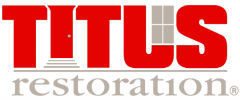Many national retail grocers and independent grocers are switching to polished concrete from their traditional VCT flooring, but why? We have spoken with several on this topic and the outcomes range across the board from in favor … to not. Find out why some grocery stores prefer polished concrete and other don’t – and what we have to say about the undecided.
What are the reasons a retailer is in favor of grocery store polished concrete?
- Easy to Clean
- Looks Good for Customers
- Reduces Maintenance Cost
What are the reasons grocers dislike polished concrete?
- Difficult to Maintain
- Doesn’t Hold up it’s Appearance or Shine
- Expensive to Maintain
Do you see a pattern here? The reasons many are in love with this flooring are the same reasons others despise it. What gives? Maybe what some are calling polished concrete isn’t actually polished concrete after all, but some imposter look-alike (for a while) that doesn’t hold up to the demands of a grocery store – or any retailer for that matter!
Pictures of 2 “polished” stores
The polished concrete industry has received a poor reputation (as noted by the grocers who dislike it) because of shortcutters, and those who do not respect the industry standards – who are putting out a cheaper product for sometimes not any less money. Yes there are those who cheat the system in every industry, but here are the details of the difference in floors:
The Difference in a Polished Concrete Floor and an Imposter Polished Concrete Floor:
A Truly Polished Concrete Floor: In a true polished concrete floor the concrete is refined through a series of diamond grinding steps. These steps are typically something like: 30, 50, 100, 200, 400, 800, 1500, and 3000 grits for a high grocery store polished floor. Around the 200-grit step there is a chemical hardener and sealer that penetrates the concrete. And, after all polishing steps are completed, a stain protection layer is burnished into the floor. The shine comes from the high diamond polishing step (3000-grit) and the stain protection additive.
Because the surface is highly refined it maintains it luster with simple maintenance. In addition, it remains a very smooth floor because there are no scratches and cleaning is easy!
The Imposter Polished Concrete Floor: However, we are seeing our competition drive down the quality of polished concrete by performing 1-2 diamond grinding steps (as opposed to 8 or more) and making the floor shine with chemicals rather than refinement. So when the chemicals wear or wash off, what is left – a floor with no refinement that is dull and difficult to maintain. Because small scratches are left in the surface from the lower diamond grits (and the skipped diamond grits) the “grocery store polished concrete” the light is now refracted (vs reflected) and the non smooth surface becomes very difficult to clean.
Now…how does the customer feel? Well we got our answers up above – those who have a truly polished concrete floor feel great – they love it, they’d wished it was done sooner! And other the other hand, those who have been cheated just simply hate this flooring.
How to stop the cheating on polished concrete?
Recently, a clarity meter has been developed to not only determine the gloss of a polished concrete floor, but also the refinement. This is a true measure of polished concrete and it’s beneficial properties: cleanable, durable, easy to maintain and it LASTS!
For more information on grocery store polished concrete floors (and how to improve their consistency), talk to an experienced polishing contractor who self performs their own work to a high quality standard…one like Titus Restoration – contact us today!
